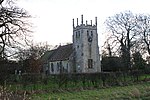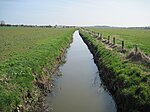Meaux Abbey
1151 establishments in England1539 disestablishments in EnglandChristian monasteries established in the 12th centuryCistercian monasteries in EnglandDemolished buildings and structures in the East Riding of Yorkshire ... and 5 more
Monasteries in the East Riding of YorkshireReligious organizations established in the 1150sScheduled monuments in the East Riding of YorkshireUse British English from July 2023Yorkshire building and structure stubs

Meaux Abbey (archaic, also referred to as Melsa) was a Cistercian abbey founded in 1151 by William le Gros, 1st Earl of Albemarle (Count of Aumale), Earl of York and 4th Lord of Holderness, near Beverley in the East Riding of Yorkshire, England. A chronicle of its history was written by Thomas Burton, one of the abbots. The abbey owned the land of Wyke, which was purchased from it by King Edward I of England in 1293 to establish the town of Kingston upon Hull. The abbey was closed in 1539 by King Henry VIII. It was demolished, and the stones were used to build defences for the town of Kingston upon Hull. The site of the abbey is a Scheduled Ancient Monument.
Excerpt from the Wikipedia article Meaux Abbey (License: CC BY-SA 3.0, Authors, Images).Meaux Abbey
Tippet Lane,
Geographical coordinates (GPS) Address External links Nearby Places Show on map
Geographical coordinates (GPS)
| Latitude | Longitude |
|---|---|
| N 53.83938 ° | E -0.34193 ° |
Address
Meaux Abbey
Tippet Lane
HU17 9SS , Wawne
England, United Kingdom
Open on Google Maps










